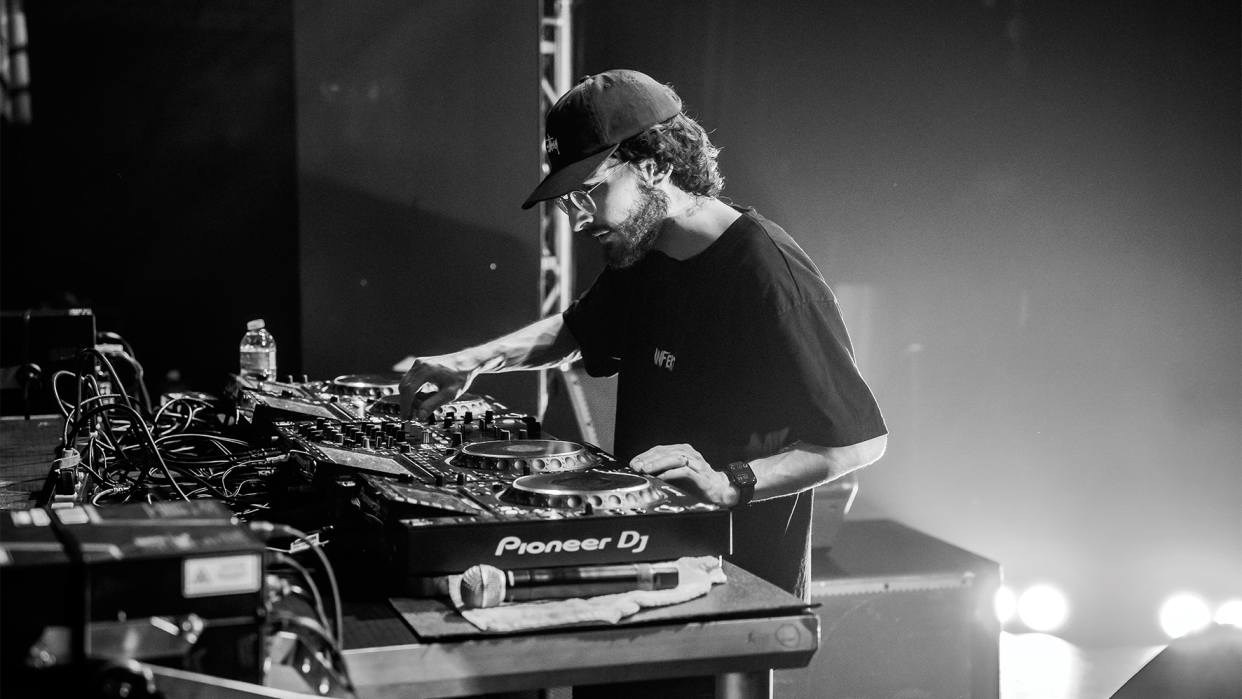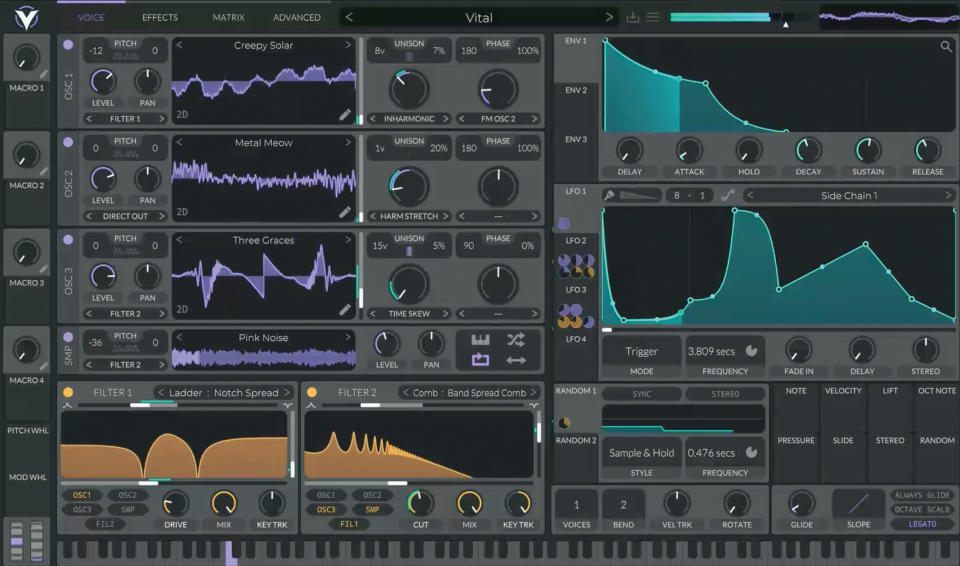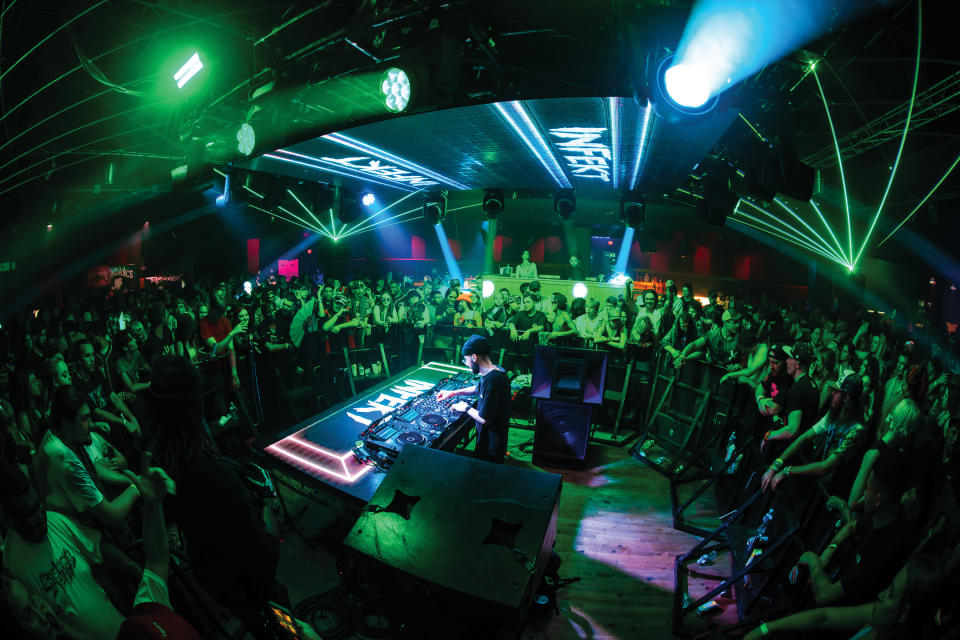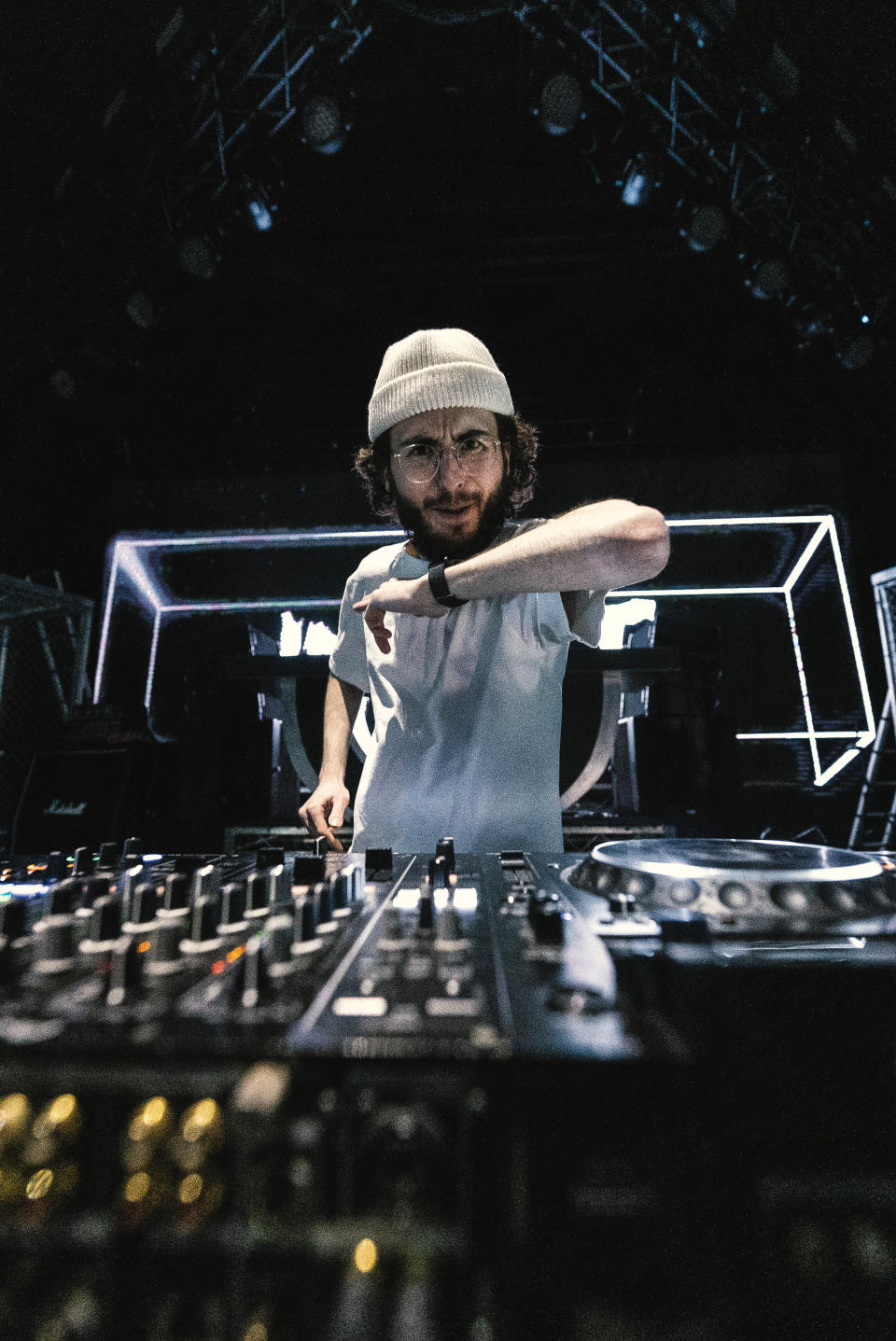Infekt: "I start off by thinking how I can make the craziest bass sounds, and build everything else around that"

- Oops!Something went wrong.Please try again later.
Hailing from Bayreuth, Germany and now based in Montreal, Canada, Christian Fial (aka, Infekt) has won millions of fans globally for his energetic and breathtaking tracks. The coruscating Orgalorg, the electrifyingly eccentric Sectumsempra and this year’s pulsating hulk Feedback to name but three.
In the course of his career, Infekt has also been a pioneering figure in the shaping of several subgenres of dubstep – and the linchpin behind redefining the problematically-dubbed ‘riddim’ subgenre to the more apt ‘trench’. With a series of monthly single releases and his new blog encouraging more fans to start producing themselves we were very eager to speak to this wildly accomplished 26-year-old.
Can you give us a bit of background on your music production journey?
“It’s kind of a funny story; basically my dad reads a lot of computer magazines. He read one where they were talking about FL Studio, and he showed me the article. He said, “you can make your own music with this”. I tried the trial version and was like, “yeah that’s cool, I’m interested but I don’t really know what to do with it”.
“Then I discovered dubstep around 2012, and since that’s all computer music it was like a door opened; it was like,‘here’s something you can make’. I tried making that and that’s how I got into it. From there I dove in so deep and wanted to learn everything about it. I switched to Reason, then Ableton Live and now I’m in Bitwig. It’s been quite a journey on the production side.”
What was it about Bitwig that made you make the switch?
“I was really interested in it; I’d heard a lot of enthusiasts were using it. Then I tried it out for a while before I made the leap. I saw a video of Nik from Noisia using it and that encouraged me to give it a go. I challenged myself to make a full tune in it. There were just so many little things that I really appreciated about it. Now, there’s so many things about it that I’d miss if I switched back to another DAW.
There’s so many things about Bitwig that I’d miss if I switched back to another DAW
“One thing that immediately pulled me in was the Spectral Suite because I think that’s great. I think additive synthesis in general is really under-appreciated. The possibilities of stuff you can do is crazy, especially when you use modern CPUs. I think Bitwig is very good at utilising that power. Also, just stuff like bounce-in-place and the hybrid tracks, that’s really huge for me right now.
“The operators where you can just take an audio clip and repeat a set amount of times to create glitch sounds, fills and those kinds of things are very useful. A huge one to note as well is just the ability to have multiple projects open at the same time. It helps me to finish stuff up where I’d usually close a project and never think about it again. With these tabs open I can switch between stuff and work on them a bit more. It makes me more likely to finish them!”

So with Bitwig as your main environment, what are some of your regular go-to plugins for mixing, compression etc?
“I definitely love all the FabFilter stuff – Pro Q and Pro C are my essential plugins. For synthesis I love using Vital, it’s a great spectral warping wavetable synth. It’s free and super good – it’s like an evolution of Serum in my mind. It has similar capabilities plus some additive stuff.
“Other than stock plugins, one of my big essentials has been the Excite Audio/Noisia spectral analysis plugin Vision 4X. I literally have that on my computer output running at all times. If there’s anything I want to know – especially on the presence of sounds – I pull it up, it’s helped massively for getting my tracks consistent.”
How do the rhythmic components of your tracks typically begin?
“The most interesting thing for me has always been sound design. So I begin by thinking how I can make the craziest bass sounds and build everything else around that. Most of the time I have an idea of something that I want to try out. It might be combining a synth with an effect or something like that, or to try a new technique. Then it kind of goes from there.
“I start making a bass sound and sometimes they have a natural flow to them. It’s then that I think about how I enhance that flow using drums and turning it into a full track. So it starts with exploration and sound design. Translating it to a club is a big part of it too.”
A lot of your tracks (eg Boundless and Boombox) are known for their seismic drops. What is the secret to making a drop land with impact?
“It’s definitely a lot about the sub bass. There’s a big focus on that in clubs – you can always tell right away when the sub goes out as the energy completely disappears. It’s all about creating a lot of movement in the sounds, particularly the low end. When it’s static it doesn’t have that impact. Just having the right rhythm with it are the main things. The drums you use are important to add that stompy feel.
I don’t really use presets very much because I love the craft of making sounds
“I don’t really use presets very much because I love the craft of making sounds. I don’t think there’s anything wrong with presets, but for me a really interesting part of the process is going from scratch and seeing what I can do with sound – the possibilities of it. With all the different types of synthesis, the effects we have and the plugins. It’s just super interesting to me.”
When preparing your live sets, how much preparation do you do and how different is the mindset?
“I definitely see DJing as a separate craft from producing because there’s an art to presenting the music in a way where it doesn’t get boring over the course of an hour. I plan out certain moments to play certain tracks. Let’s say I want a moment to really stand out; I’ll put a deeper, more lower-energy track before it. Even if it doesn’t always get the biggest reaction, I’m thinking about what I want the key moments to be later in the set. That’s sort of what makes my sets stand out from others that I’ve heard, I think. I try to always plan it in a way that makes sense, and so I can sort of curate the energy in a way.”
It’s been roughly a decade since dubstep’s big mainstream breakthrough. Do you think we’re due a dubstep renaissance?
“Yeah, I mean the interesting thing back in 2012 was that Skrillex was the big guy who brought it to the mainstream, but the genre as a whole wasn’t that big. Whereas now I think the genre’s actually bigger – it just doesn’t have a Skrillex-like figure in the mainstream anymore. The dubstep scene has a lot of huge festivals now that wouldn’t have been possible back then. The mainstream just isn’t as aware of it as it was when Skrillex was out there doing his thing. Generally I’d say dubstep is bigger than ever.”

We’ve been looking at some of your course offerings, and it looks like a really in-depth structure. What motivated you to get into music production education?
“Well, I started my Patreon six years ago. At the time I thought doing a few lessons made sense for earning a bit of extra money. Then I just discovered that I really enjoyed doing it. During lockdown when I wasn’t able to tour it was a big thing for me. I really enjoyed writing [content] and wanted to combine it with education. I started writing little bits of the course every day.
“In terms of dubstep, there’s not a massive amount of educational content out there. Yes, you can find sound design tutorials and you can find videos that tell you how to do certain technical things, but there’s nothing that was really wider-spectrum. So how to do dubstep mixdowns, how to make your own drums, how to put it all into context. What thoughts you go through etc. So that was the primary idea behind it. I’ve combined that passion for writing that I discovered with that gap in the market that I wanted to fill a bit. I ended up writing a whole course.”
Can you talk us through the ‘trench’ genre that you write about on your blog… What is the definition of it and why did it need to be created?
“Essentially this is kind of a rabbit-hole topic. Dubstep had multiple different styles that developed over time. The original dubstep was low and focused on sub-bass. Then there was the Skrillex/heavy mainstream sound. Then there was something kind of between them that developed in the UK. That sort of sound didn’t really have a name but then people just gave it the name ‘riddim’.
I think drum & bass has some of the best producers in the world for just people who are super-technical
“A lot of the artists who gave it that sound didn’t like it, as it stemmed from the Jamaican term and nobody knew why we’d put that name onto this genre. The definition [of what the subgenre was] got really washed-out. Giving it this new name of ‘trench’ is kind of this idea of taking it back into our hands. It’s a genre that’s more atmospheric than heavier dubstep which is more about being loud and aggressive. Trench is less focused on rhythm.”
Who are some of your music production heroes and why?
“I definitely look up to a lot of German bass producers, especially Neuro drum & bass. I think drum & bass has some of the best producers in the world for just people who are super-technical. It has quite a high barrier for entry. Artists like Noisia and Matthias. In the dubstep space, great artists like Space Laces and Samplifire that are doing just incredible productions. A lot of the newcomers are honestly pushing the envelope. Some of the new stuff is crazy. The wildest sound design and rule breaking. I get a lot of inspiration from that.”
Who would be a dream collaborator?
“Space Laces – I think what he does is just next level. His sounds are always so creative and interesting. People look up to him in terms of production.”

A lot of your work seems to riff on ideas of man and machine fusing or coming together. Is that something that you’re fearful of – especially with the rise of AI – or fascinated by?
“It’s definitely a bit of a mix of both. I try not to focus too much on that doomsday vibe because I do think that generally trying to be more in the present is always a good thing. Not living in fear all the time. I think it could be pretty exciting but I also think it’s especially exciting when taking away jobs that are pretty inhumane right now. Obviously we have to figure out alternatives to that at some point. It’s exciting in the sense that robots could replace humans and that gives us new opportunities to explore being creative. It’d just give us more time to do what we want to do.”
What do you prefer to be doing - working on tracks in the studio or performing them live?
“I think I like a healthy mix of both. When I’m on the road too much I miss being in my studio, but the same goes for the other way round also. I like seeing people and getting that energy from the live shows. There’s nothing more exciting than making a new tune and playing it out live and getting a good reaction for it. Both are necessary for me.”
What is the ultimate advice you’d give to anyone getting started in the world of music production?
“What I see a lot is people forgetting why they got into it in the first place. People look at numbers and get lost in the social media world. Comparing themselves to others. I think it’s important to always remember the reason you want to make music. For the first few years, I wouldn’t have made dubstep if it was all about making money or taking it really seriously.
“At the time it was such a small underground thing. That I can make a living from it now is still quite incredible to me. I think what allowed me to keep going for all these years is to remember to have fun with it. I enjoy making a lot of tunes and I’ve set up a system to give away two tracks a month via Patreon. So, I’ve built a system to make revenue on top of what I enjoy doing.”
What’s next on the agenda for you?
“There’s a few shows coming up – I’ve got the Lost Lands Festival and then I’ve got a few releases. I’m releasing a single a month at the moment, each one has its own cartoon character as artwork. I’m excited to build that world with those cartoon characters and see how we can implement those into the live shows.”

